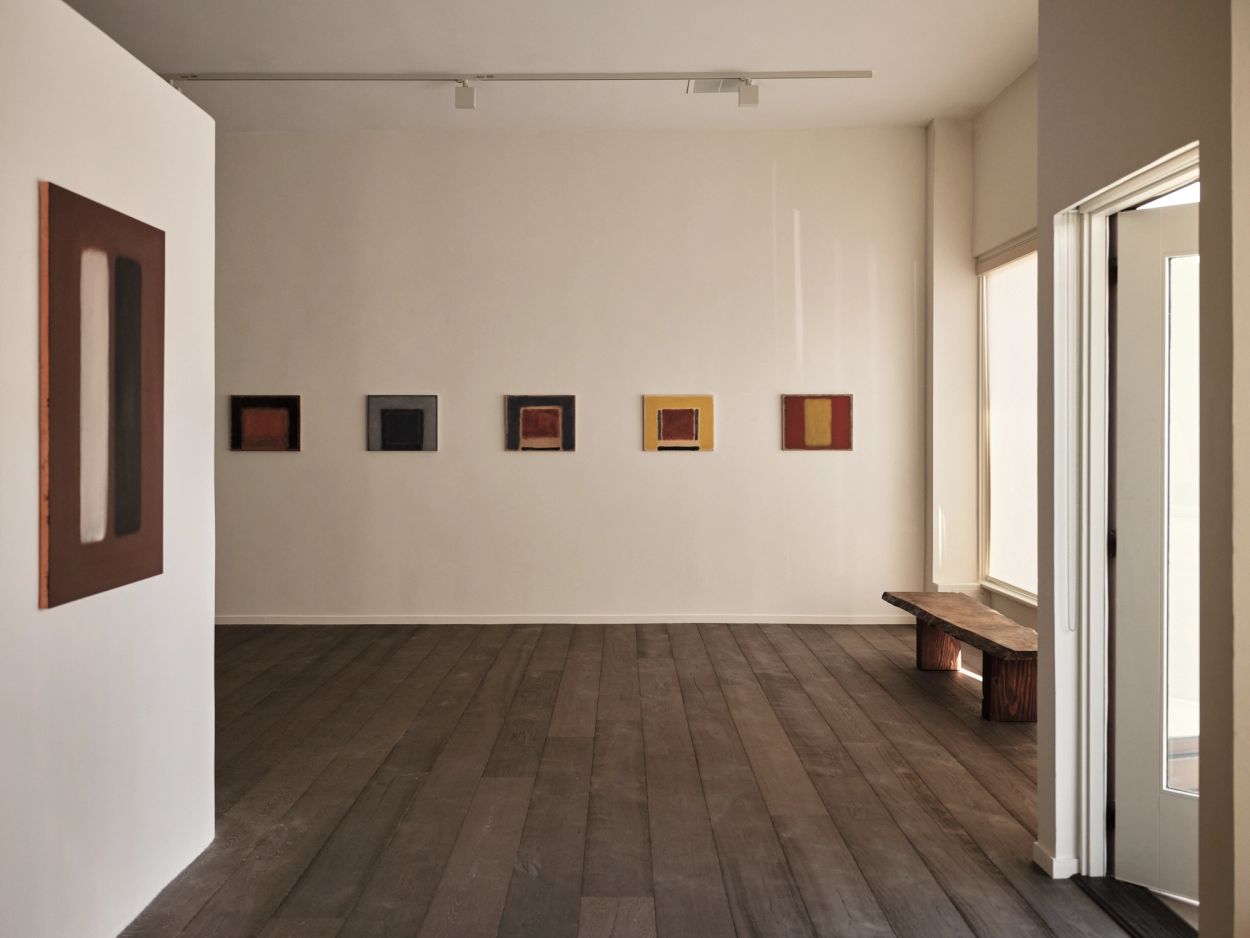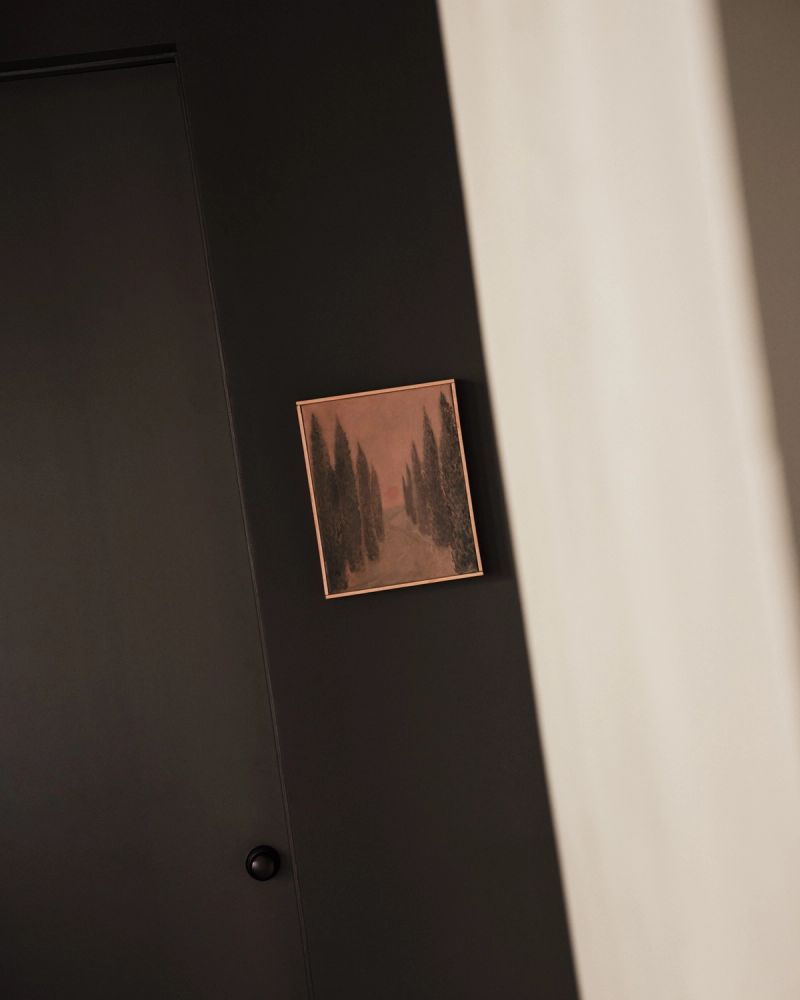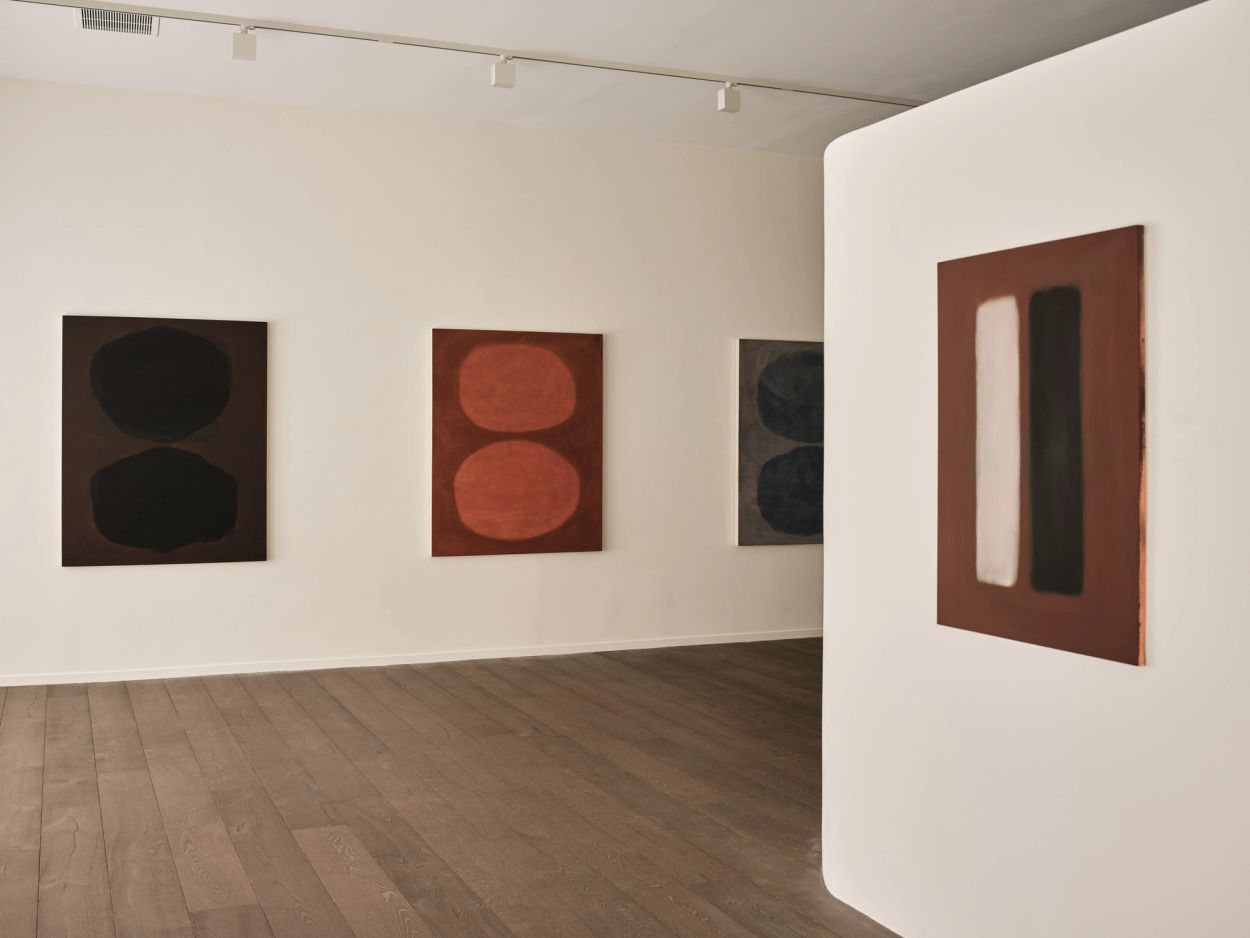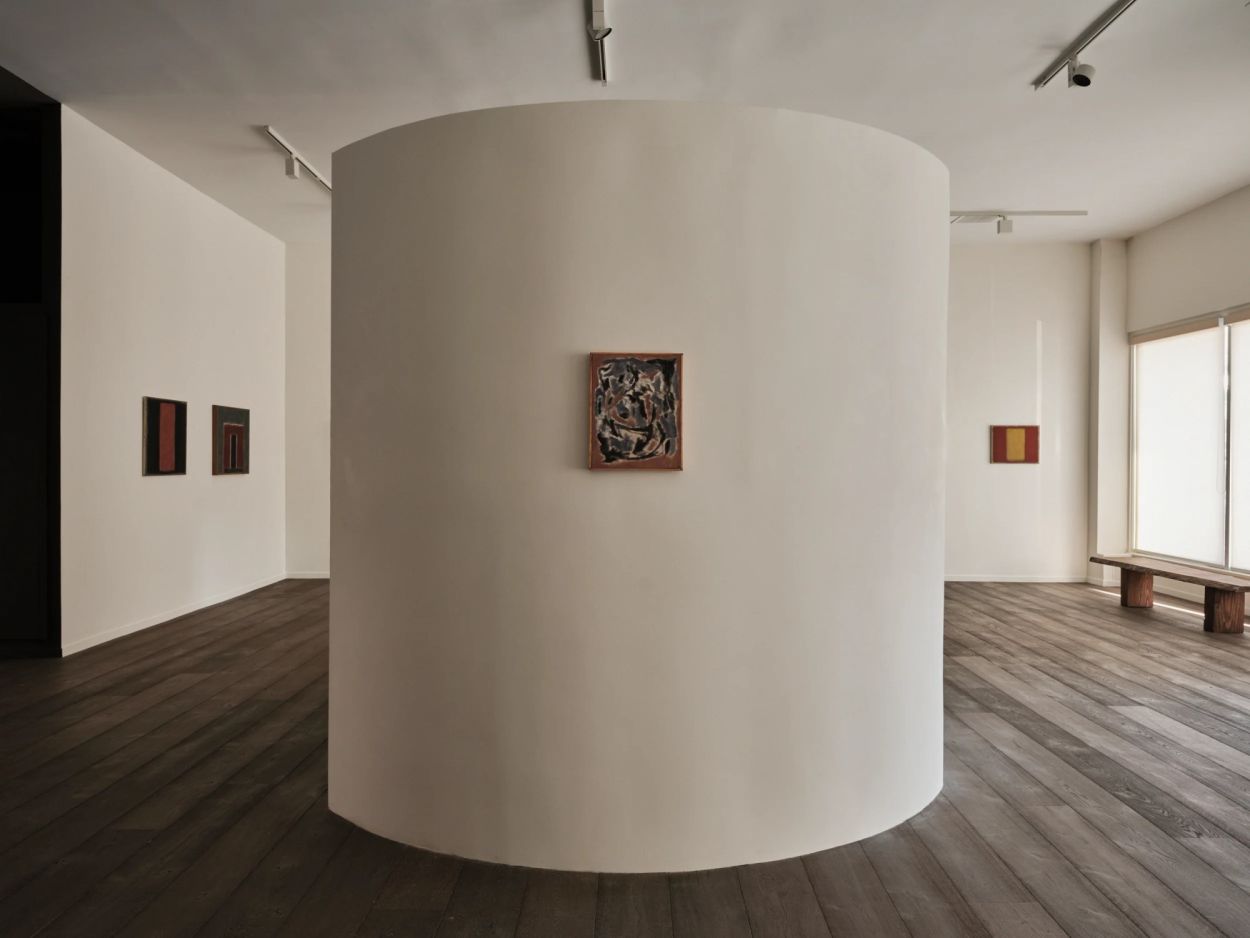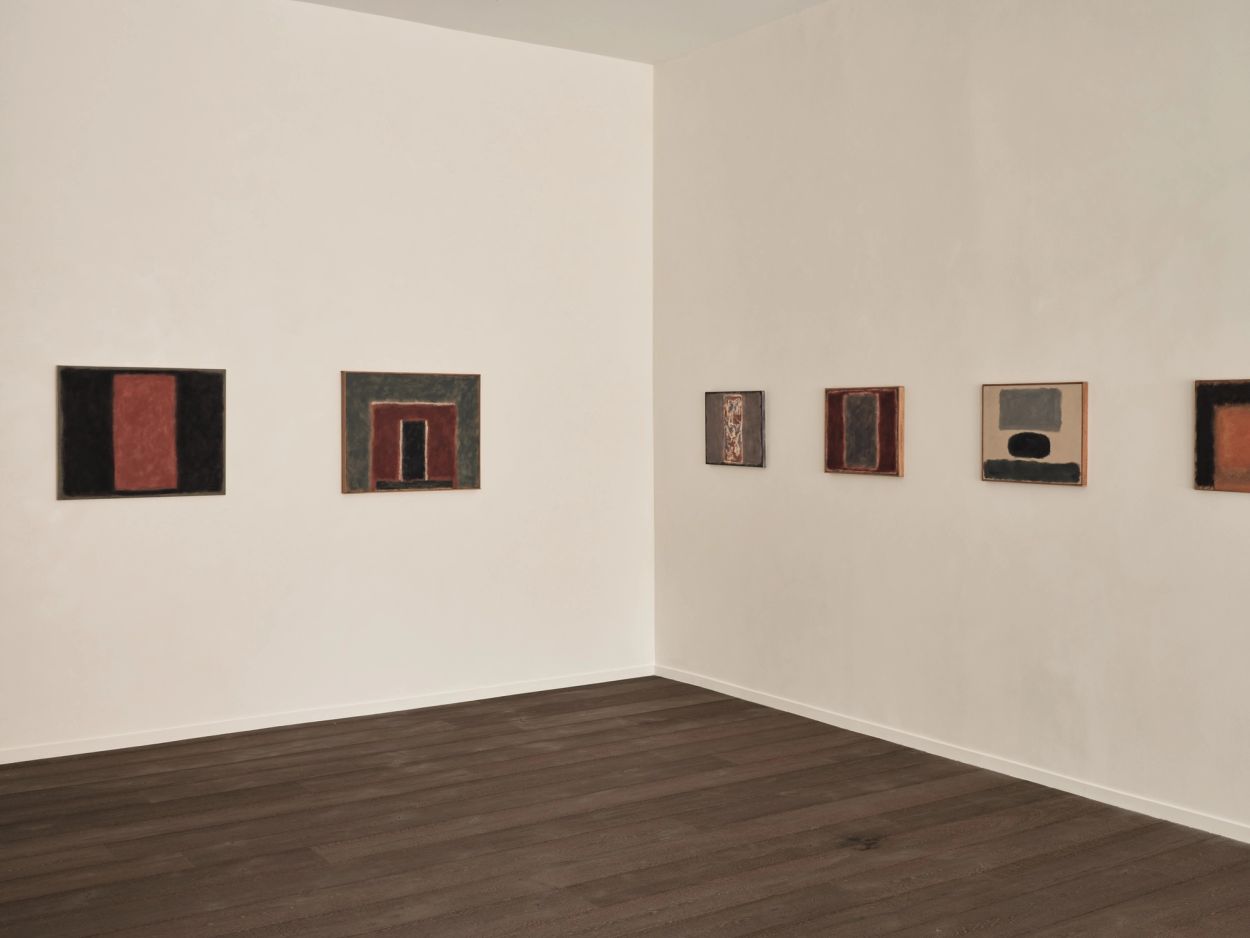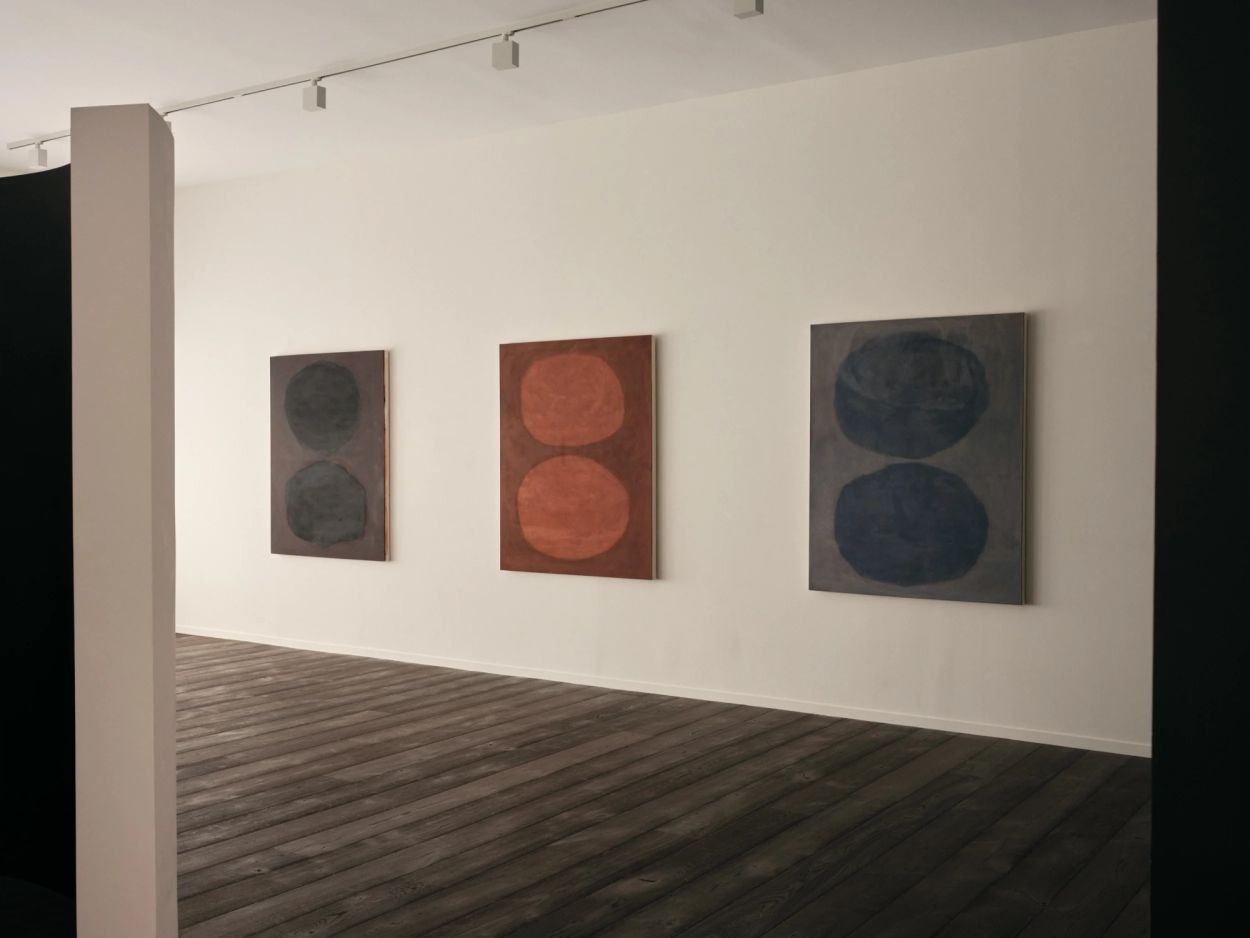John Zabawa: IlluminationsSep 22 – Nov 22, 2023
Illuminations can be both literal and metaphorical; one can illuminate with light or with knowledge. The latest body of work by the American painter, John Zabawa, developed out of this double meaning, their painted surfaces radiate outwards, their colours shimmering like the edges of the sun.
Compositionally, the works are orderly and defined, staying well within the limits of the canvas - however, their edges fizz, blur and seep, their colours glow and quiver, and the individual components seem to mingle and interact, without ever touching.
Zabawa forgoes the still lives and domestic scenes that were present in his previous work, moving instead towards a sense of ambiguity and abstraction. The critic Harold Rosenberg noted that the Abstract Expressionists of the 60s and 70s - Mark Rothko, Clyfford Still, Barnett Newman - painted “in the chaos of feeling and sensation,” and the same could be said of Zabawa, whose latest series draws from a well of existential questions - about art, and the world at large.
Made over the course of a year, the group of twenty paintings form a time capsule of sorts, a reflection of the artist’s world - the poetry and literature, painters and philosophers that filled his landscape during this period. Spanning centuries and continents, Zabawa looked to Baudelaire, Rimbaud and Kirkegaard, to Robert Graves, Nikki Giovanni and Yoko Ono, whose words offered a lens through which he could see the world, which, in turn, became a way for him to paint it.
The work of Marcus Aurelius, the Roman emperor and Stoic philosopher, became a north star for the artist during this time, returning over and over again to his ‘Meditations’. Neither a book with a plot, nor a tale with a moral, Meditations is a collection of thoughts - the daily musings of a philosopher as he lived his life. Intrigued by these notes to self, Zabawa responded in turn, creating a framework of his own - a set of guidelines by which he could create a new body of work.
A statement of intent and a declaration of his motives and beliefs, Zabawa’s rules read like a manifesto of sorts:
- Only mixed colours
- Layer everything
- Blend forms into one another
- Avoid hard lines
- Evade Perspective
- Paint with intention. Time is non-existent
- Black always means the universe
- Expel ornamentation
- Retain harsh gestures
At first glance, the nine rules have an air of practicality - a straightforward dictum or style guide. However, there is something more poetic that emerges; the seeming simplicity of his statements contain a deeper meaning and one senses his search for productivity and effectiveness upon the canvas, as well as his desire to find meaning and purpose from within it.
- Only mixed colours
Even when applied thinly, Zabawa’s colours are rich and deep. Mixed on the palette and layered on the canvas, the planes of colour dance and drift, and their dappled application creates a sense of dynamism. - Layer everything
Meaning upon meaning, influence upon influence, rectangle upon rectangle - Zabawa does indeed layer everything. - Blend forms into one another
Whilst the circular forms of Zabawa’s ‘Stones’ series are distinct - two black rounds upon a crimson backdrop, a pair of peachy spheres on an earthy-brown ground - their edges are not crisp. Looking at the diffused contours, one is reminded of the Renaissance painting technique ‘Sfumato’ which produces a softness around the edges as one form merges with another, as if disappearing into a shadow.
For Zabawa, his blended forms result in a haze - like looking through a memory. - Avoid hard lines
Thin, scratchy lines nervously make their way across the sfumato surfaces. White like chalk, these marks feel fragile and impermanent against the deep red abyss. These lines are not hard, they are a hint. - Evade Perspective
Perspective is the mathematical law “by which objects appear to diminish in size as they recede from us”. Established by the architect Brunolleschi in the 1400s, by evading perspective Zabawa dismisses the logic of mathematics and science in favour of something more raw and emotional. - Paint with intention. Time is non-existent
These paintings feel very sure of themselves. They are clean, clear and concise, with each element placed just so. One does not sense the presence of an underpainting or draft, instead each piece is a direct expression that comes straight from its maker onto the canvas. - Black always means the universe
Black is often defined as a lack of information - but, for Zabawa, it contains everything not nothing. The first pigment used in prehistoric cave paintings and the first ink used in the printing press, black has been significant to the development and history of both art and literature. - Expel ornamentation
Ornamentation is decoration without meaning. - Retain harsh gestures
A riot of harsh gestures in blue-grey and black, ‘Seeds of Hell’ was the last piece to be painted, and it has a tangible rebelliousness. Disregarding the well-behaved geometries of the other compositions, “it breaks all the rules that the others follow,” says Zabawa, “it’s the outsider, the runt, the one that doesn’t really fit in.”
—
Alongside the manifesto, in the artist’s studio is a Roman coin from the time of Marcus Aurelius. A tiny piece of history, the coin is a visual cue - a reminder of the writings that were so fundamental to the creation of Zabawa’s Illuminations. “Find What Moves Them” advises Aurelius - and that he did.
Words
- Rosanna Robertson
Photos
- Rich Stapleton
Featured works

 LA Gallery
LA GalleryJohn ZabawaHollow as Thought Lost, 2023
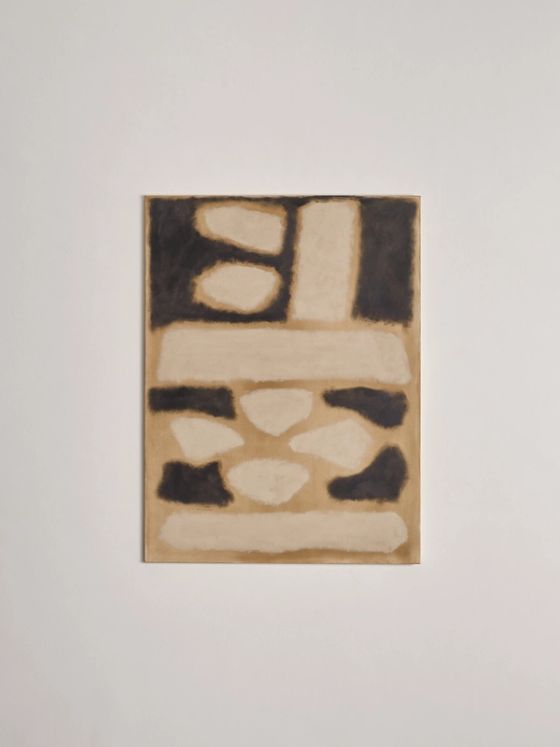
 LA Gallery
LA GalleryJohn ZabawaFlying Stones, 2023


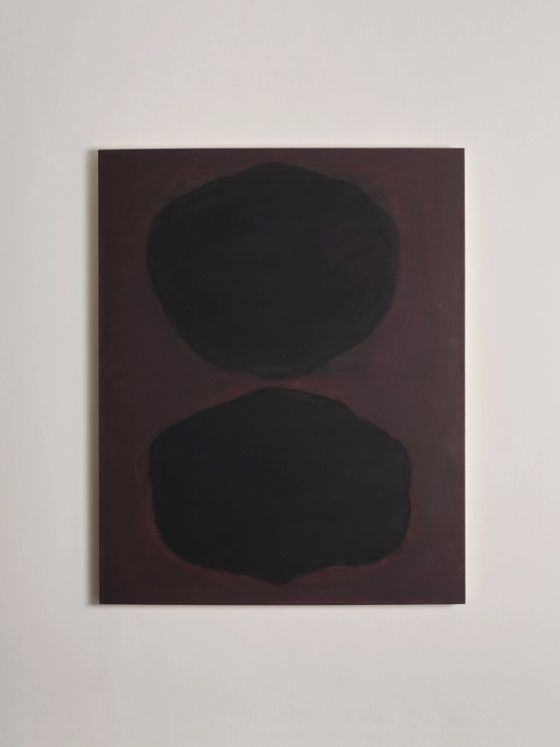
 LA Gallery
LA GalleryJohn ZabawaStones IX, 2023

Spanning minimalist presentations and classical still lives, painter John Zabawa is not married to any school or style – instead, he seeks the best way to convey his message, to express something of himself and his process.
Related exhibitions
 Bath Gallery
Bath GalleryJohn Zabawa: Gateways Apr 15 – Jun 19, 2021
Gateways is Los Angeles-based artist John Zabawa’s first solo show in the UK, featuring 24 oil paintings on canvas and wood. Their warm colours and abstract forms embody two branches of Zabawa’s art practice: a conceptual series of diptychs, and more figurative works, such as still life compositions of geometric fruit bowls and plants.
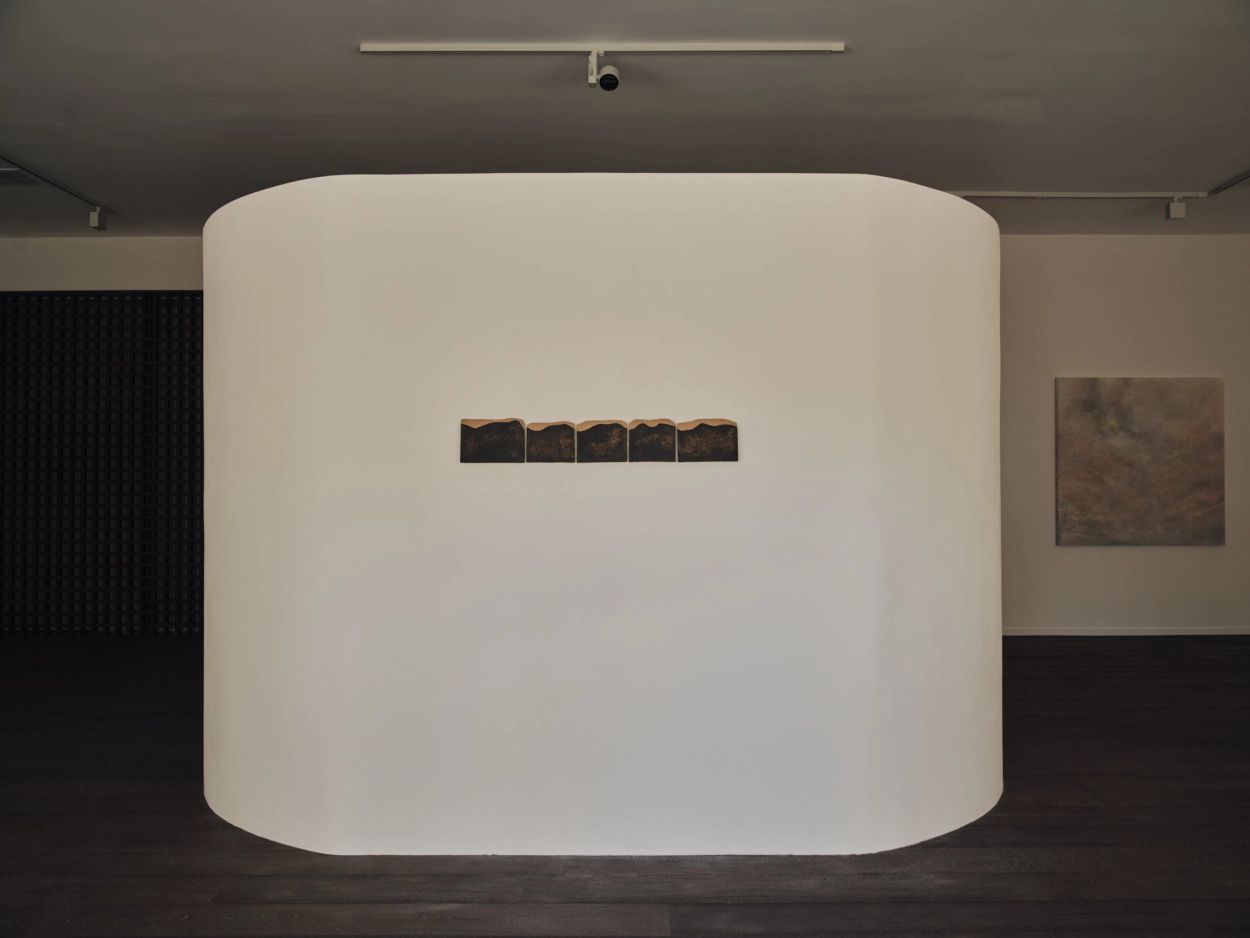
Although Korea is known as ‘The Land of Morning Calm’, this name is a mistranslation. The result of ancient Korean, and its spoken dialects, haphazardly translated into Chinese characters many centuries ago, the sobriquet more faithfully speaks to the instability of meaning and its susceptibility to time and place. Francis Gallery’s inaugural show, Morning Calm, takes this ambiguity as a point of entry into the idea of Korea, and its multitudes. In the exhibition, six artists of Korean and Korean American descent explore Korea and Koreanness as composites of memory, imagination, history, and feeling. Produced by artists at different stages of their careers, working in both Korea and the United States, the artworks reinterpret traditional Korean objects, materials, techniques, and rituals in modern, hybrid expressions.

It is a hot, late September morning—quite typical of early autumn in California, but still tangibly at odds with the deepening quality of the light. I thread between lived-in Echo Park residences to climb the narrow stairs to John Zabawa’s studio, a small converted two-bedroom house that fits neatly within the domestic vernacular of the neighborhood. A pot is boiling on the stove of the kitchenette to make a cup of tea. Somehow, this detail, however slight, feels essential to the context—the paintings that rim the rooms are small domestic scenes: a flower arrangement, a plant, a portrait of a friend, a plate of lemons, a bottle of wine flanked by two half-filled glasses. Perched on a disused radiator, a platter holds nine lemons, unfussily arranged, their peels beginning to tarnish slightly the way peels do when left to the elements.
